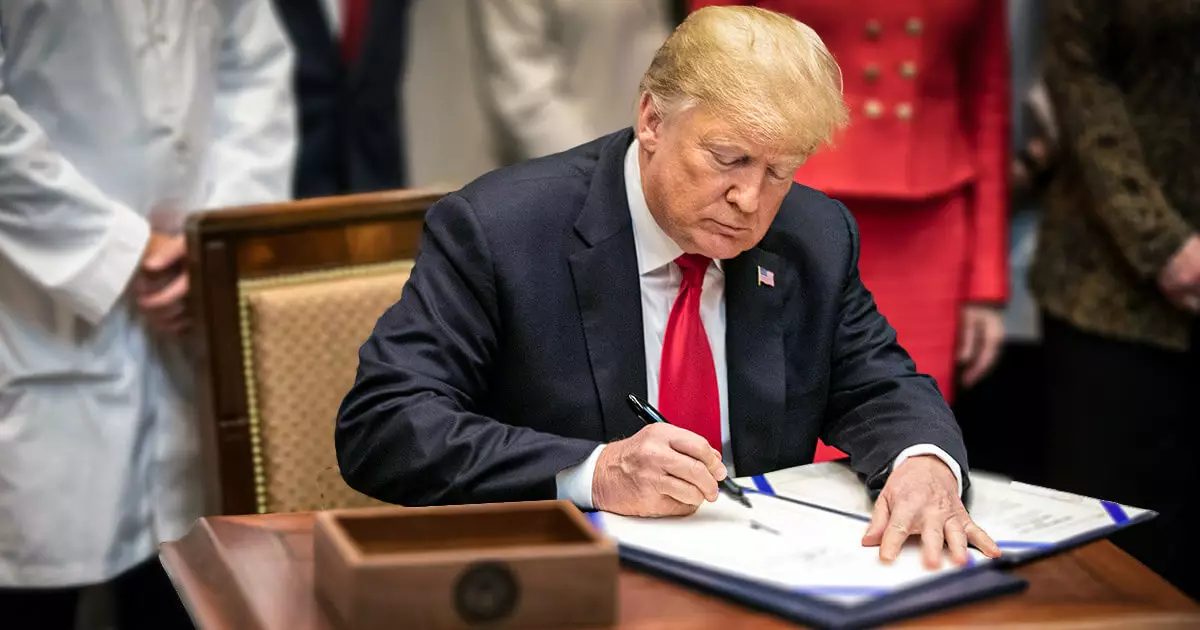In a significant move that affects the burgeoning digital finance sector, President Donald Trump signed an executive order on January 23 aimed at establishing a Presidential Working Group on Digital Asset Markets. This initiative signals a strategic pivot towards a potentially comprehensive approach to cryptocurrency regulation in the United States. Importantly, it places a firm prohibition on the exploration of a central bank digital currency (CBDC), instead focusing on building a national digital assets stockpile.
The Formation of the Working Group
The newly constituted working group is positioned to be instrumental in formulating the United States’ policy regarding digital currencies. By establishing a regulatory framework for digital assets, including stablecoins, the group aims to foster clarity and support innovation within the sector. Such regulatory coherence is vital for both investors and businesses navigating a landscape rife with uncertainty. This effort underscores a recognition that as cryptocurrencies continue to gain acceptance, a clear and structured approach to their management is essential for economic growth and stability.
One of the most fascinating elements of the executive order is the potential creation of a national digital assets stockpile, with Bitcoin (BTC) being at its core. This marks an unprecedented step for any U.S. administration, leaning towards an active involvement in cryptocurrency holding rather than mere regulatory oversight. According to insights from industry experts like Alex Thorn from Galaxy Digital, the stockpile may serve as a symbolic measure, indicating a governmental stance towards crypto without necessitating large-scale purchases.
The order reflects a forward-thinking mindset, potentially allowing the U.S. to stabilize its position in the global digital economy. This would not only involve the administration holding assets but also begin to establish strategic reserves that could mitigate shifts in market dynamics.
Cooperation Among Key Financial Players
The executive order also emphasizes the importance of collaboration across federal agencies. The involvement of the Secretary of the Treasury and the Chairman of the Securities and Exchange Commission demonstrates a coordinated effort to align the disparate pieces of the federal financial framework regarding digital currencies. This interdisciplinary cooperation is critical for crafting an effective and comprehensive policy that addresses the multi-faceted nature of digital assets.
David Sacks, termed the “White House AI & Crypto Czar,” is tasked with spearheading these discussions, integrating insights from leading private-sector experts. This approach not only integrates external knowledge but also showcases the administration’s willingness to adapt to innovations coming from the digital asset sphere.
Despite the optimism encapsulated in the executive order, challenges remain. Notably, the prohibition against advancing CBDCs signifies a contentious stance that could limit the United States’ competitive edge compared to other nations exploring digital currency solutions. Furthermore, the rescission of prior digital asset initiatives suggests a possible regression, as former frameworks aimed to provide a foundation for global competitiveness and regulatory clarity.
Ultimately, the implementation of this executive order sets the stage for a redefining moment in U.S. digital finance policy. As regulatory frameworks evolve and a national crypto strategy emerges, it will be essential for industry stakeholders to remain engaged and proactive in reshaping the future landscape of digital assets. The success of this working group will hinge on its ability to strike a balance between innovation, regulation, and the overarching need for economic liberty.

